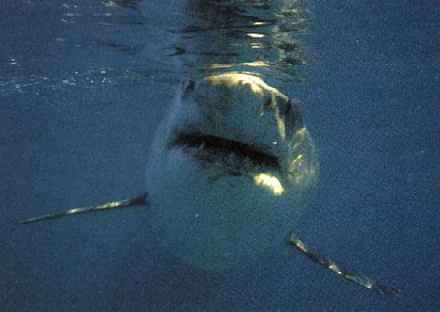 |
Warm blood
Creat whites and their relatives - the mako, thresher, and porbeagle - are all warm-blooded, which means that they are able to keep their body temperature higher than the surrounding water. Only mammals, birds, and a few fast fish, like tuna, are warm-blooded. These sharks have blood vessels in their muscles arranged in complex nets, so that the warm blood leaving the muscles passes heat the the cold blood coming from the gills. A high body temperature means that great whites have warm muscles which are able to act fast. This is important for a predator that has to make a high-speed dash to catch its prey. Being warm-blooded may also help the great white to digest its food more quickly. Scientists estimate that after a big feed a great white can last three months before needing another meal.
|

